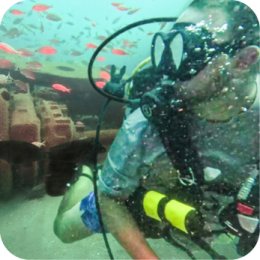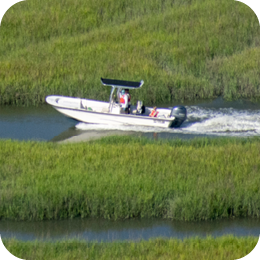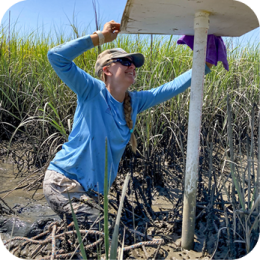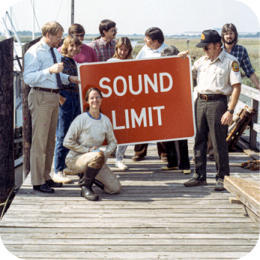**** Update as of 10/16/2017: Call center for Hurricane Irma emergency authorizations and moratorium will tentatively close on November 15th, 2017.****
The Georgia Department of Natural Resources Coastal Resources Division (CRD), under authority granted pursuant to the Coastal Marshlands Protection Act (CMPA) and the Shore Protection Act (SPA), finds that an emergency exists within all the coastal counties due to Hurricane Irma.
Initial assessment of Hurricane Irma damage indicates that storm surge may have caused greater impact than last year’s Hurricane Matthew. “Storm surge, flooding, and high winds have caused damage to many structures located in Georgia’s tidal waterways, over marshlands and along barrier island beaches,” stated Spud Woodward, CRD director. “Our staff will be working with public, commercial, and government entities to facilitate a quick recovery from Hurricane Irma but we need information about the extent of the damage. We want to focus our efforts on recovery; therefore, action on non-essential projects currently in the queue will be delayed.”
CRD has initiated Emergency Orders #1 and #2, which places a moratorium on nonessential construction/alteration within the jurisdiction of the CMPA and SPA. This moratorium is effective immediately and will be in place until further notice. See below for the Hurricane Irma Guidance Document.
A call center will be activated Monday, September 18, 2017 to gather information about impacts to beach front property, private docks, bank stabilizations, marinas, commercial docks, or other structures within coastal waters, marshlands, or along barrier island beaches. Staff will also be available to answer questions about permitting/regulatory processes and needs for areas impacted within the jurisdiction of CMPA or SPA. The call center number is (912) 264-7218 and will operate between the hours of 8 AM and 4:30 PM.
For more information please check out the short videos below and read the Hurricane Irma Guidance Document
Information Regarding Debris and Marsh Wrack Removal:
Repairs to Beachfront Homes, Condos, Businesses, and/or Amenities:
Repairs to Structures in the Marsh and/or Waterways- Private Docks, Shared Docks, Community Docks, Commercial Docks, Marinas, Erosion Control Structures, Dikes, Causeways, Culverts, and Bridges:
Hurricane Irma Guidance Document
September 15, 2017
The following guidance document provides information regarding activities within the marsh, waterways, and along beachfront properties. Please note that this guidance does not relieve individuals from obtaining proper local, state, and federal authorizations. You should coordinate with local governmental officials regarding upland disposal of debris (natural or man-made).
Debris and Boat Removal:
In response to debris (natural or man-made) from the marsh, waterways, or along beachfront properties the Department has activated Emergency Orders #3 and #4. This allows for the removal of debris and relocation to an upland area. For information regarding upland disposal methods, please contact your local government officials.
Marsh Wrack:
Marsh wrack typically consists of decaying saltmarsh grasses. In response to the large amount of displaced marsh wrack, the Department is allowing the removal of marsh wrack from upland areas under Emergency Orders #3 and #4.
Beach Sand Removal:
In response to displaced sand on public and private upland property, the Department has activated Emergency Order #12. Emergency Order #12 allows for relocation of sand to adjacent dunes or beaches using hand tools. If mechanized equipment is needed to relocate large amounts, coordination with the Department is required. Sand must be free of man-made debris such as trash and construction materials.
Temporary Placement of Sand Bags:
In response to erosion caused by Hurricane Irma, the Department can provide individual approvals for temporary placement of sand bags. The purpose of such sand bags is to provide temporary protection of upland properties until a long-term solution can be properly designed and approved. Please contact the Department for assistance.
Repairs to Beachfront Homes, Condos, Businesses, and/or Amenities:
Beachfront property owners or land managers should first secure homes, condos, businesses, and/or amenities. Prior to undertaking major repairs or re-construction, proper coordination with the Department is required. To facilitate the Department’s review, property owners and managers should document existing conditions by taking photos, locating any pre-storm photos, locating any previous authorizations, and assessing what is needed to return property to pre-storm conditions.
Repairs to Private Docks, Shared Docks, Community Docks, Commercial Docks, or Marinas:
Prior to undertaking major repairs or reconstruction of docks or marinas, property owners or managers must coordinate with the Department. Major repairs include the use of heavy equipment. To facilitate the Department’s review, property owners and managers should document existing conditions by taking photos, locating any pre-storm photos, locating any previous authorizations, and assessing what is needed to return property to pre-storm conditions.
Repairs to Erosion Control Structures (i.e. bulkheads, seawalls, rip-rap, living shorelines, etc.):
Prior to undertaking major repairs or reconstruction of erosion control structures property owners or managers must coordinate with the Department. Major repairs include the use of heavy equipment. To facilitate the Department’s review, property owners and managers should document existing conditions by taking photos, locating any pre-storm photos, locating any previous authorizations, and assessing what is needed to return property to pre-storm conditions.
Repairs to Dikes, Roads, Causeways, Culverts, and Bridges:
Prior to undertaking major repairs or reconstruction of dikes, roads, causeways, culverts, and bridges in, on, or within the vicinity of the marsh, property owners or managers must coordinate with the Department. Major repairs include the use of heavy equipment. To facilitate the Department’s review, property owners and managers should document existing conditions by taking photos, locating any pre-storm photos, locating any previous authorizations, and assessing what is needed to return property to pre-storm conditions.
Click here for a PDF of the Hurricane Irma Guidance Document (September 15, 2017)







